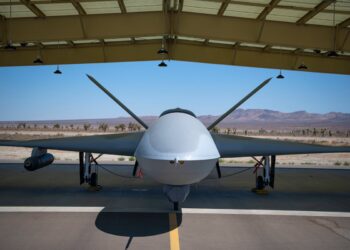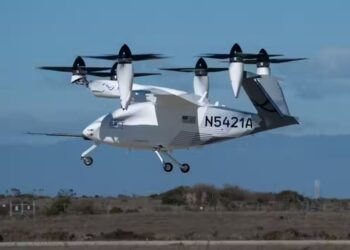The bills passed last week are part of a deal that ended the longest U.S. government shutdown in history. These bills allocate billions of dollars for significant Air Force and Navy programs.
This funding includes the construction of new aircraft carriers and submarines, development of facilities for new stealth bombers and nuclear missiles, as well as research and development spending for a crucial airborne command and control program.
Central to the Continuing Appropriations Act of 2026 is an investment of nearly $200 million for Air Force research and development of the E-7 Wedgetail program. This funding effort aims to keep its rapid prototyping efforts on schedule and facilitate the transition to production. Additionally, the bill reallocates another $200 million from unobligated Air Force aircraft procurement funds to the E-7, bringing the total spending boost for the program to almost $400 million.
Despite the Pentagon’s push to terminate the E-7 program during the 2026 funding process, this spending aims to sustain it. The Air Force initially intended to purchase a fleet of up to 26 E-7s to replace its aging E-3 Sentry Airborne Warning and Control System planes. In 2024, a $1.2 billion contract was awarded to Boeing to commence work on this program, which has already been adopted by Australia, Turkey, and South Korea. However, the Air Force sought enhancements like open mission system software and improved GPS and satellite communication capabilities.
In a June congressional hearing, Defense Secretary Pete Hegseth raised concerns about the E-7’s future viability, advocating for more focus on space-based intelligence, surveillance, and reconnaissance systems. When the Pentagon’s budget proposal was released later that month, the plan to cancel the E-7 was announced, citing delays, cost escalations, and fears regarding its survivability in a contested environment. This decision faced opposition from lawmakers and over a dozen retired Air Force generals, who wrote an open letter asserting the necessity of the Wedgetail for future warfare and urging the Pentagon to reconsider.
Overall, the bill raises Navy shipbuilding spending by more than $1 billion, which includes an additional $510.4 million for the Virginia-class submarine program and $150 million for the carrier replacement initiative aimed at phasing out aging Nimitz-class aircraft carriers in favor of more advanced Ford-class carriers.
Alongside the continuing resolution, the Military Construction, Veterans Affairs, and Related Agencies Appropriations Act appropriates nearly $600 million for Air Force projects related to the B-21 Raider, a nuclear-capable stealth bomber under development by Northrop Grumman. This includes $378 million for B-21 facilities and flight simulators at Ellsworth Air Force Base in South Dakota, with additional allocations of $127.6 million for Whiteman Air Force Base in Missouri, and nearly $91 million for B-21 facilities at Dyess Air Force Base in Texas.
Rep. Jodey Arrington, R-Texas, who chairs the House Budget Committee, described the funding for Dyess as “the largest investment in Dyess history,” more than tripling the previous year’s allocation. These funds are designed to support the B-21’s introduction and ensure that Dyess remains at the forefront of America’s air power.
Ellsworth is set to receive operational B-21s first, with Whiteman and Dyess following as planned by September 2024. Following the successful test flight of the second B-21 in September 2025, the Air Force announced major construction initiatives at all three bases in fiscal 2026. Additionally, $130 million is allocated to build a utility corridor at F.E. Warren Air Force Base in Wyoming for the LGM-35A Sentinel program, which aims to replace over 400 Minuteman III intercontinental ballistic missiles with modern systems and infrastructure.
Moreover, Eglin Air Force Base in Florida is earmarked for $125 million to construct F-35A facilities, which includes funding for a test hangar and maintenance operations. The total construction spending for the Air Force is estimated at approximately $4 billion.
Stephen Losey is the air warfare reporter for Defense News, previously covering various military-related topics at Air Force Times and Military.com. He has extensive experience covering U.S. Air Force operations, including assignments in the Middle East.












